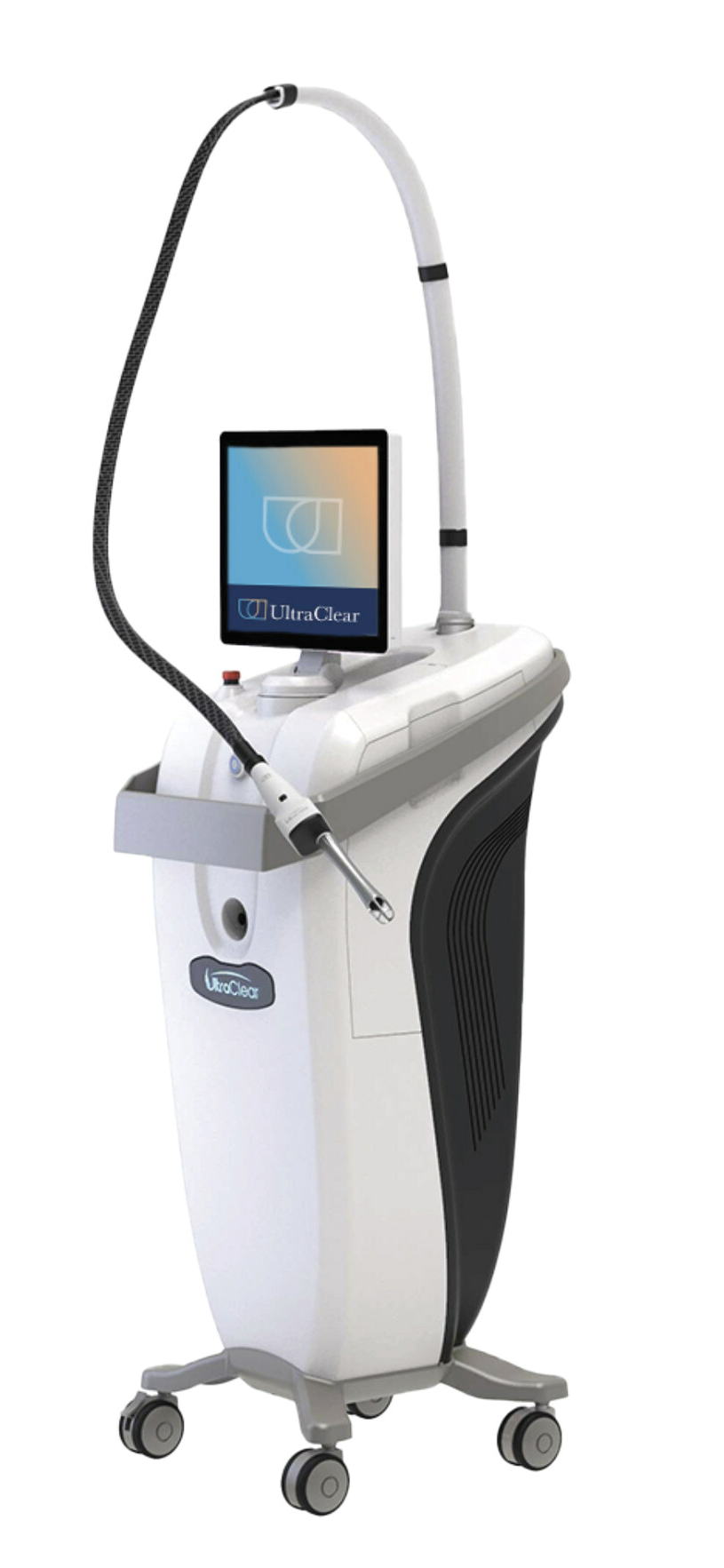5 Reasons to Buy
1. Effective complementary treatment to lifting, tightening, and various other surgical procedures.
2. Less pain and less recovery time. Patients are healing within 5 to 7 days instead of 7 to 9, and fewer than 50% of patients are requiring anesthesia for certain modalities (compared with 96% with CO2 lasers).
3. New 2910 nm wavelength and breakthrough pulsing technology make it safe for Fitzpatrick skin types I through VI, whereas I previously rarely used lasers on anyone higher than type III.
4. The preset modes make it easy to use:
- 3DMIRACL® is the “Red-Carpet” treatment
- Clear and Clear+ are for superficial resurfacing of the skin including pigmentation, texture, and fine lines and wrinkles
- Ultra is for scars and sun damage
- UltraClear mode is for treating both superficial and dermal remodeling in one single pass, particularly beneficial around the perioral and periocular areas.
5. The versatility to use UltraClear for a wide range of procedures, such as Laser-Coring™ to reposition the brows or improve aging of the face, cheeks, jawline, and neck or other areas of redundant skin. It even has a surgical mode that I like to use to remove skin lesions without need for cautery.
Product Specifications/Measurements
Applications: 6+
Wavelength: 2910 nm
Technology: 3DIntelliPulse™
Consumables: None
Spot Size: 170 µm

As an oculoplastic surgeon, I tell my patients all the time: There is only so much you can do with surgery. We can remove excess skin, contour, and reposition or add volume, but the quality of the skin really does not change. Fortunately, we have lasers for that.
I used a full fractionated CO2 ablative laser for almost 10 years and then a fractionated CO2 laser for more than 2 years. They were very good devices, but I always look for ways to help our patients heal faster, experience less prolonged redness, and avoid the dreaded post-inflammatory hyperpigmentation.

I had been looking into the UltraClear® fiber laser from Acclaro for a couple years before finally deciding to purchase the device at the 2024 Tell-All Tribune: An Aesthetic Think Tank. It is a beautiful, sleek machine, and because of its 2910 nm erbium fiber laser pulsing technology, the UltraClear can create the same effect on the skin (ablation) as a CO2 laser, but with controlled heat, which decreases risk, pain, and downtime.
Its proprietary 3DIntelliPulse™ technology allows for dividing the energy into micro-pulses and blended pulses that are delivered incredibly fast (5000 Hz). This delivery technology increases thermal relaxation time, which allows the vapor and heat to escape the area before the next micro-pulse. The laser has the highest level of depth precision and creates far less damage to the surrounding tissue by decreasing bulk heating.
I also use the UltraClear for Laser-Coring™ to correct the signs of aging and the effects of gravity from the hairline to the clavicle. This technique targets the epidermis and dermis in one pass by drilling up to 4 mm under the skin and delivering ablative energy in a spiral pattern, similar to a corkscrew. While similar in some ways to mechanical micro coring, UltraClear Laser-Coring™ does not use needles so it can be used on the whole face and neck with far fewer side effects. With laser-coring, you are literally removing tiny columns of skin and initiating collagen production to improve wrinkled and redundant skin; all this without cutting, hence no scar.
The UltraClear’s versatility allows me to do more procedures, get better results, and safely treat a wider range of patients (Fitzpatrick I to VI). I regularly use it as an adjunct to surgery with great results, and it allows the patient to have only one recovery period. Overall, the UltraClear laser leads to happier patients and a strong revenue source in my practice.
Ready to Claim Your Credits?
You have attempts to pass this post-test. Take your time and review carefully before submitting.
Good luck!
Recommended
- MAY-JUN 2025 ISSUE
Polydeoxyribonucleotides in Plastic Surgery and Beyond
Sheila C. Barbarino, MD, FACSSheila C. Barbarino, MD, FACS



